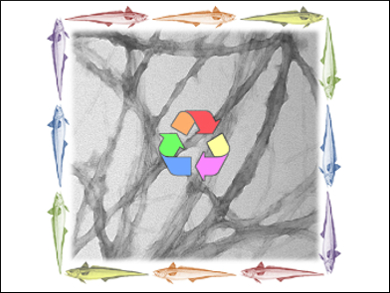Using waste material from the fishing industry, fish eye lenses from the hoki or whiptail (Macruronus novaezelandiae) have been extracted to provide amyloid fibrils, with the goal of using them to immobilize and stabilize enzymes.
Luigi Sasso and Juliet A. Gerrard, University of Canterbury, Christchurch, New Zealand, have devised a chemical method for functionalizing these crystallin protein nanofibrils (CPNFs) and/by attaching enzymes. The scaffolded enzymes proved to be much more stable in solution than the free enzyme and could be reused, an advantageous property for industrial application.
The team is currently investigating the co-immobilization of glucose oxidase (GOX) and β-galactosidase on these nanofibrils. This leads to a two-enzyme biosensor for the detection of lactose levels in raw milk. Cooperation of the two enzymes would improve the specificity of the enzyme-mediated transformation, reduce the diffusion time of the substrate, and maximize the functional surface area for enzyme loading.
- Crystallin Nanofibrils: A Functionalizable Nanoscaffold with Broad Applications Manufactured from Waste,
Manmeet Kaur, Sarah Roberts, Jackie Healy, Laura Domigan, Madhusudan Vasudevamurthy, Juliet A. Gerrard, Luigi Sasso,
ChemPlusChem 2015.
DOI: 10.1002/cplu.201500033




